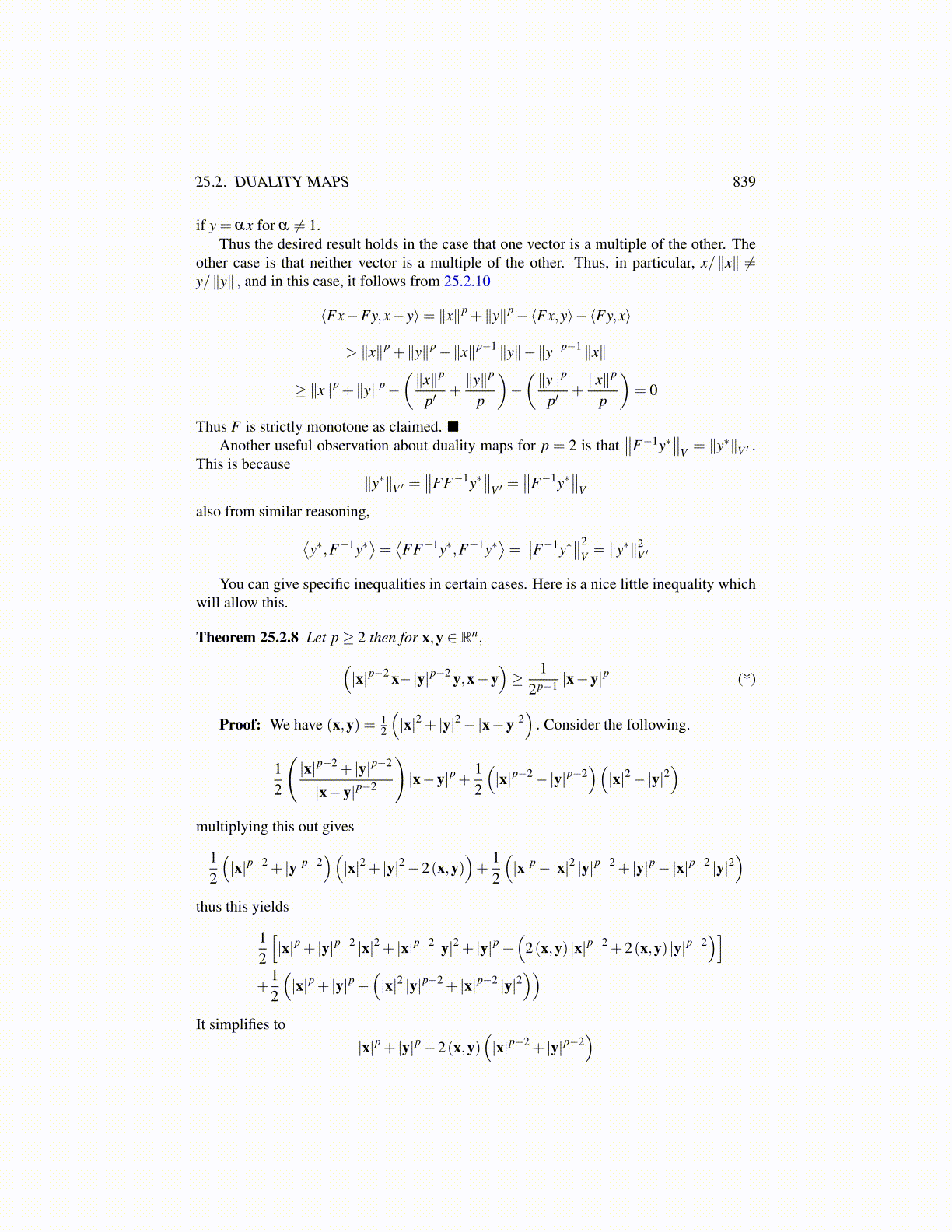
25.2. DUALITY MAPS 839
if y = αx for α ̸= 1.Thus the desired result holds in the case that one vector is a multiple of the other. The
other case is that neither vector is a multiple of the other. Thus, in particular, x/∥x∥ ̸=y/∥y∥ , and in this case, it follows from 25.2.10
⟨Fx−Fy,x− y⟩= ∥x∥p +∥y∥p−⟨Fx,y⟩−⟨Fy,x⟩
> ∥x∥p +∥y∥p−∥x∥p−1 ∥y∥−∥y∥p−1 ∥x∥
≥ ∥x∥p +∥y∥p−(∥x∥p
p′+∥y∥p
p
)−(∥y∥p
p′+∥x∥p
p
)= 0
Thus F is strictly monotone as claimed.Another useful observation about duality maps for p = 2 is that
∥∥F−1y∗∥∥
V = ∥y∗∥V ′ .This is because
∥y∗∥V ′ =∥∥FF−1y∗
∥∥V ′ =
∥∥F−1y∗∥∥
V
also from similar reasoning,⟨y∗,F−1y∗
⟩=⟨FF−1y∗,F−1y∗
⟩=∥∥F−1y∗
∥∥2V = ∥y∗∥2
V ′
You can give specific inequalities in certain cases. Here is a nice little inequality whichwill allow this.
Theorem 25.2.8 Let p≥ 2 then for x,y ∈ Rn,(|x|p−2 x−|y|p−2 y,x−y
)≥ 1
2p−1 |x−y|p (*)
Proof: We have (x,y) = 12
(|x|2 + |y|2−|x−y|2
). Consider the following.
12
(|x|p−2 + |y|p−2
|x−y|p−2
)|x−y|p + 1
2
(|x|p−2−|y|p−2
)(|x|2−|y|2
)multiplying this out gives
12
(|x|p−2 + |y|p−2
)(|x|2 + |y|2−2(x,y)
)+
12
(|x|p−|x|2 |y|p−2 + |y|p−|x|p−2 |y|2
)thus this yields
12
[|x|p + |y|p−2 |x|2 + |x|p−2 |y|2 + |y|p−
(2(x,y) |x|p−2 +2(x,y) |y|p−2
)]+
12
(|x|p + |y|p−
(|x|2 |y|p−2 + |x|p−2 |y|2
))It simplifies to
|x|p + |y|p−2(x,y)(|x|p−2 + |y|p−2
)